Asclepias linaria, Pineneedle Milkweed
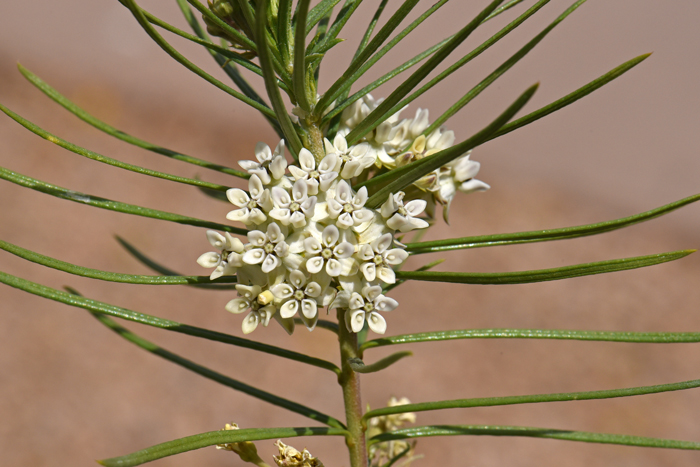
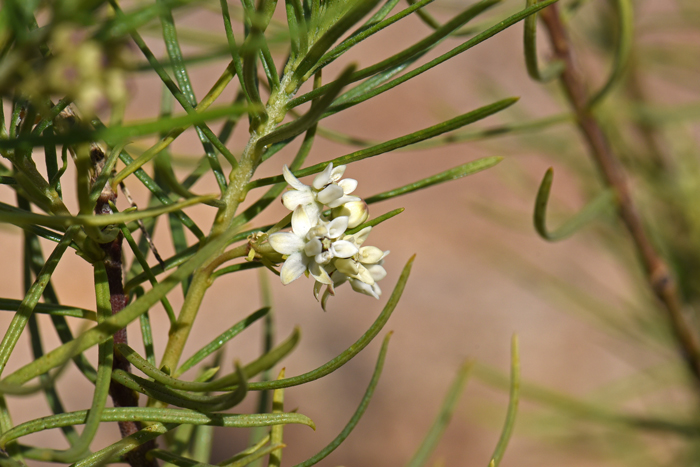
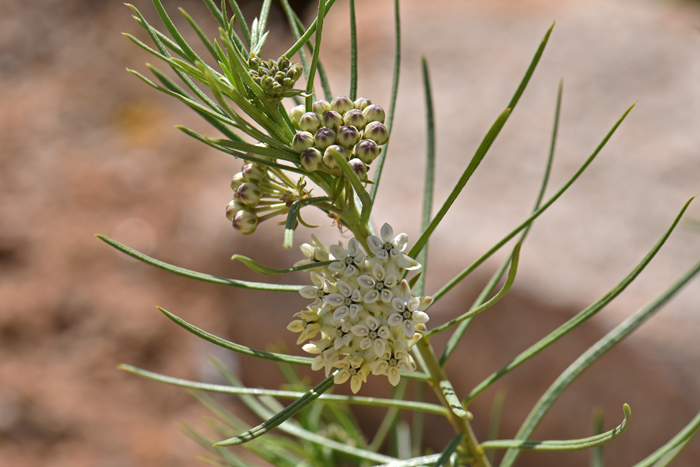
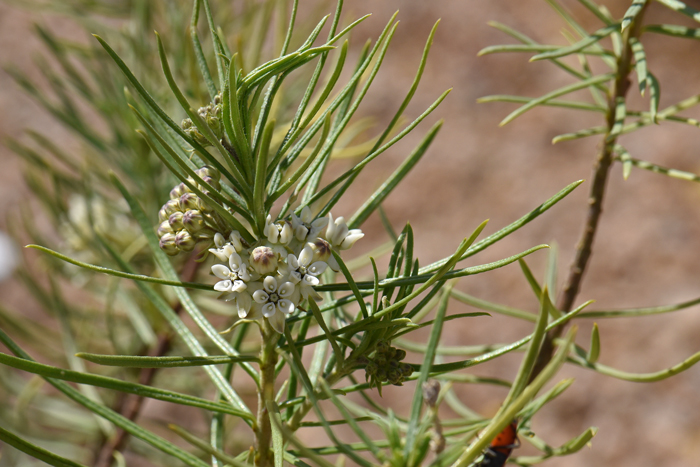
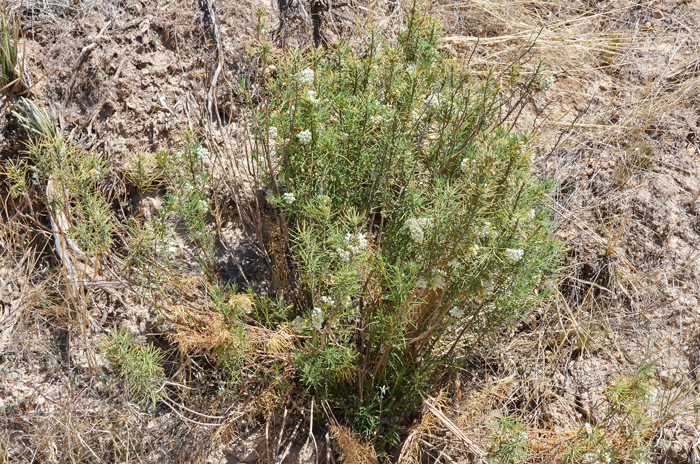
Scientific Name: Asclepias linaria
Common Name: Pineneedle Milkweed
Also Called: Pine-leaf Milkweed, Pine-needle Milkweed; (Spanish: Hierba del Cuervo, Yerba de Cuervo, Talayote)
Family: Asclepiadaceae, Milkweed Family
Synonyms: ()
Status: Native
Duration: Perennial
Size: Up to 5 feet.
Growth Form: Forb/herb, subshrub; woody near base, stems erect or ascending, multiple branches, with milky sap.
Leaves: Green; alternate, persistent, without a petiole (sessile), narrowly linear like pine needles.
Flower Color: White or greenish-white with pinkish or purplish appendages, small flowers; inflorescence an umbel with small stems or peduncle, fruit is a follicle.
Flowering Season: February to October.
Elevation: 1,500 to 6,000 feet.
Habitat Preferences: Dry rocky slopes and mesas.
Recorded Range: Rare in the United States occurring only in CA, AZ and NM. Not common in California and New Mexico. Also found throughout central and northern Mexico.
North America & US County Distribution Map for Asclepias linaria.
U.S. Weed Information: No data available.
Invasive/Noxious Weed Information: No data available.
Wetland Indicator: No data available.
Threatened/Endangered Information: No data available.
Genus Information: In North America there are 76 species and 91 accepted taxa overall for Asclepias. World wide, The Plant List includes 215 accepted species names and includes a further 122 infraspecific rank for the genus.
In the Southwestern United States: Arizona has 29 species of Asclepias, California has 18 species, Nevada has 13 species, New Mexico has 26 species, Texas has 38 species, Utah has 17 species. All data is approximate and subject to taxonomic changes.
Comments: Pineneedle Milkweed is rare in the United States but common in Arizona where found in its preferred habitats. Pineneedle Milkweed makes an attractive natural looking desert landscape plant with its interesting shape and unusual flower clusters that attract butterflies and other insects.
Also see in Southwest Desert Flora; Arizona Milkweed, Asclepias angustifolia, Antelope Horns Milkweed, Asclepias asperula, Mexican Butterfly Weed, Asclepias curassavica, Dwarf Milkweed, Asclepias involucrata, Rush Milkweed, Asclepias subulata and Horsetail Milkweed, Asclepias subverticillata.

